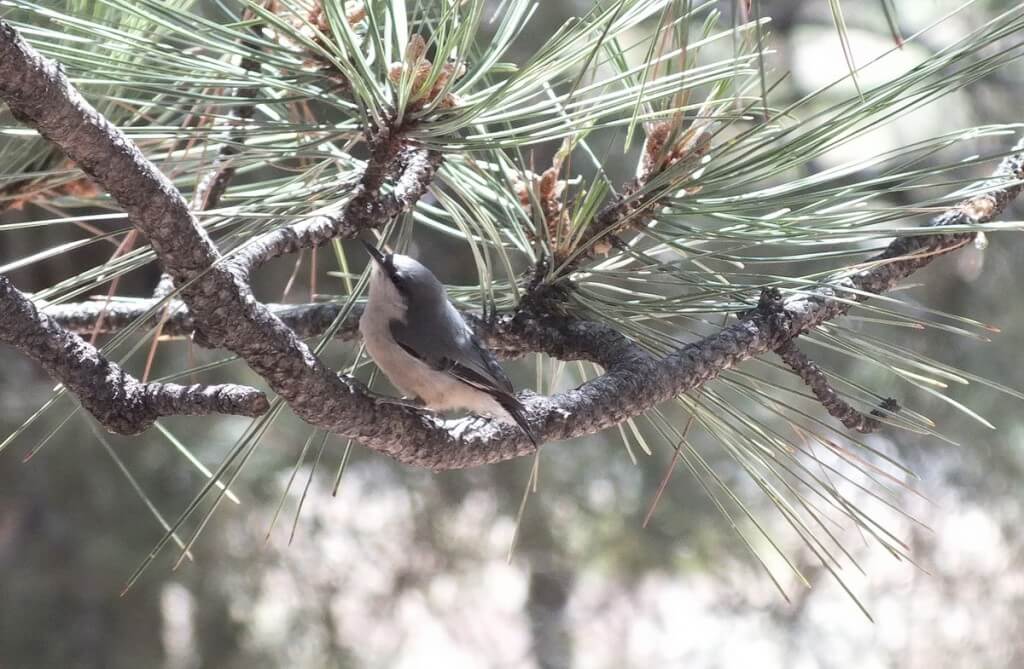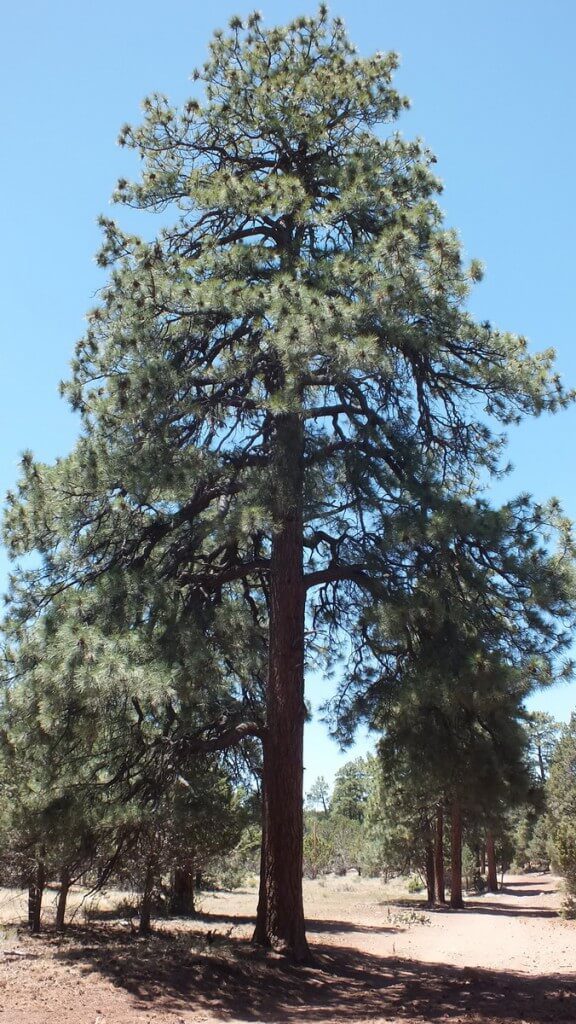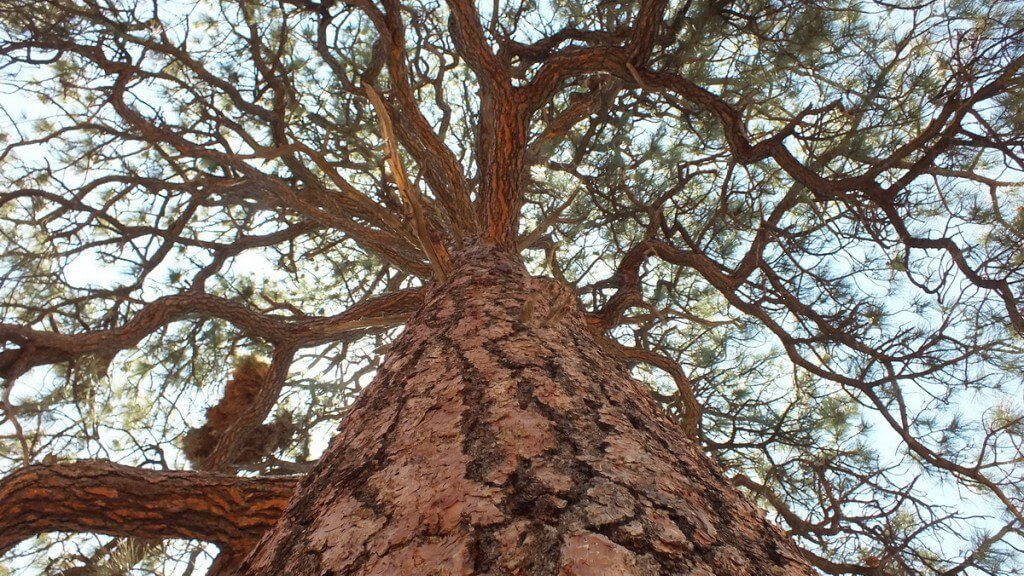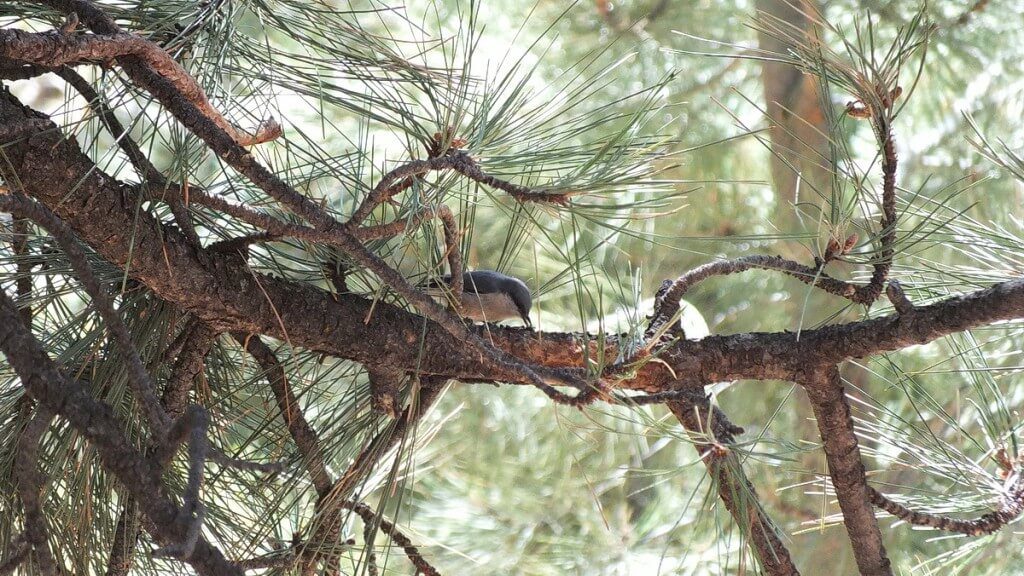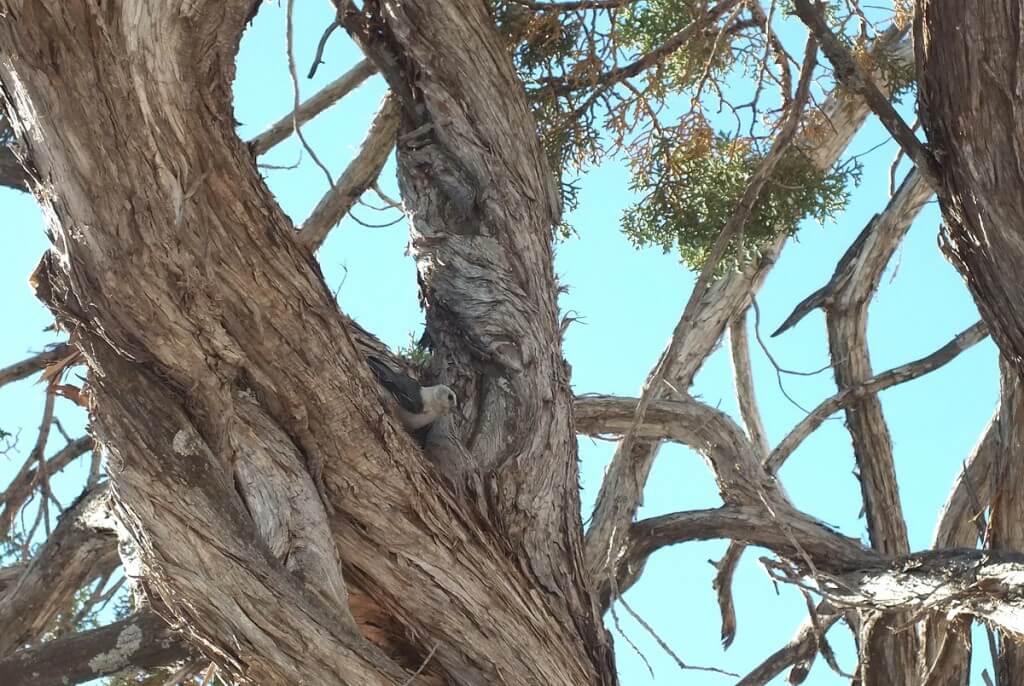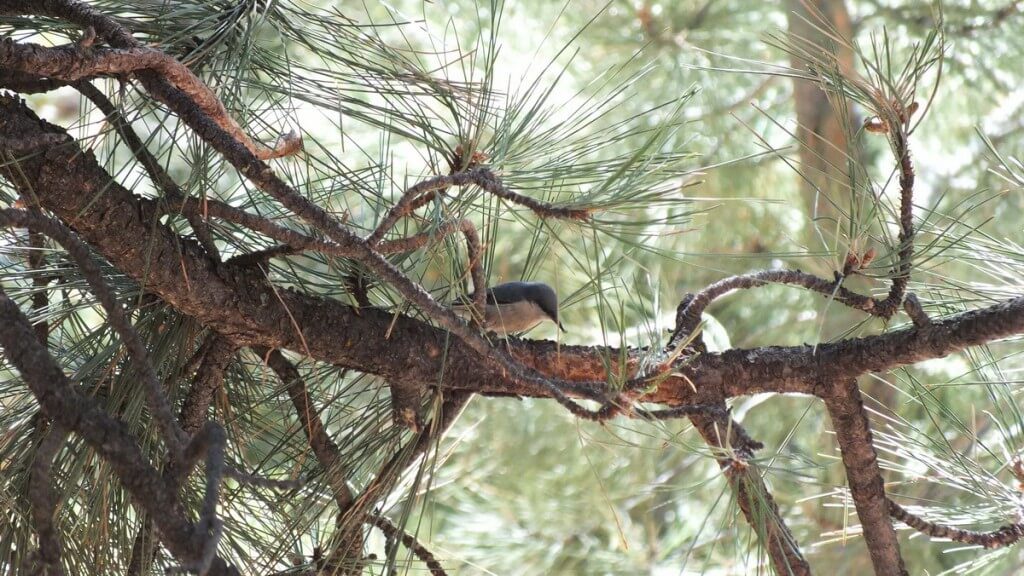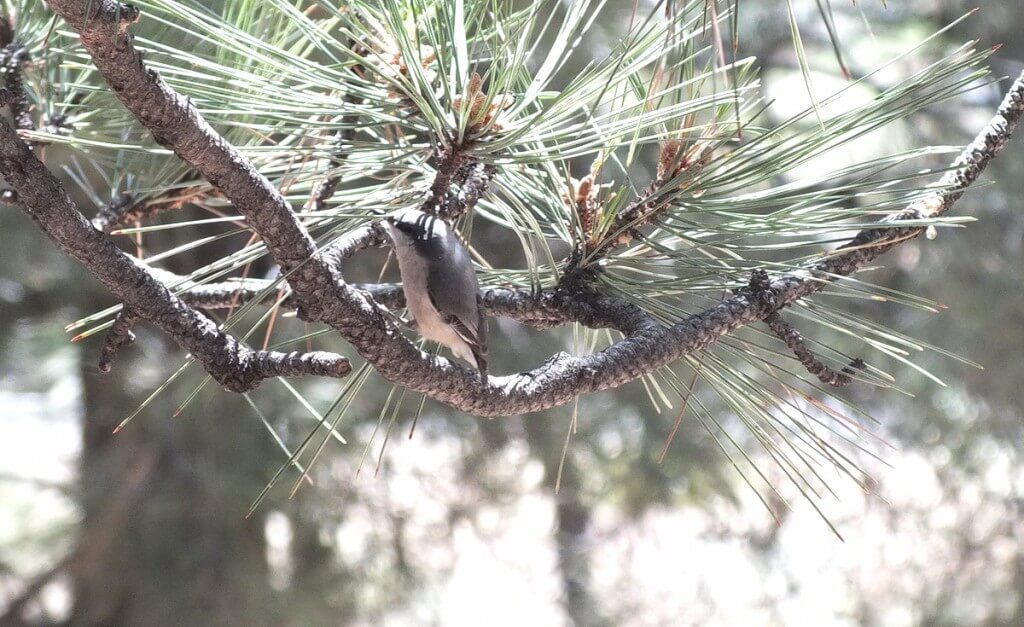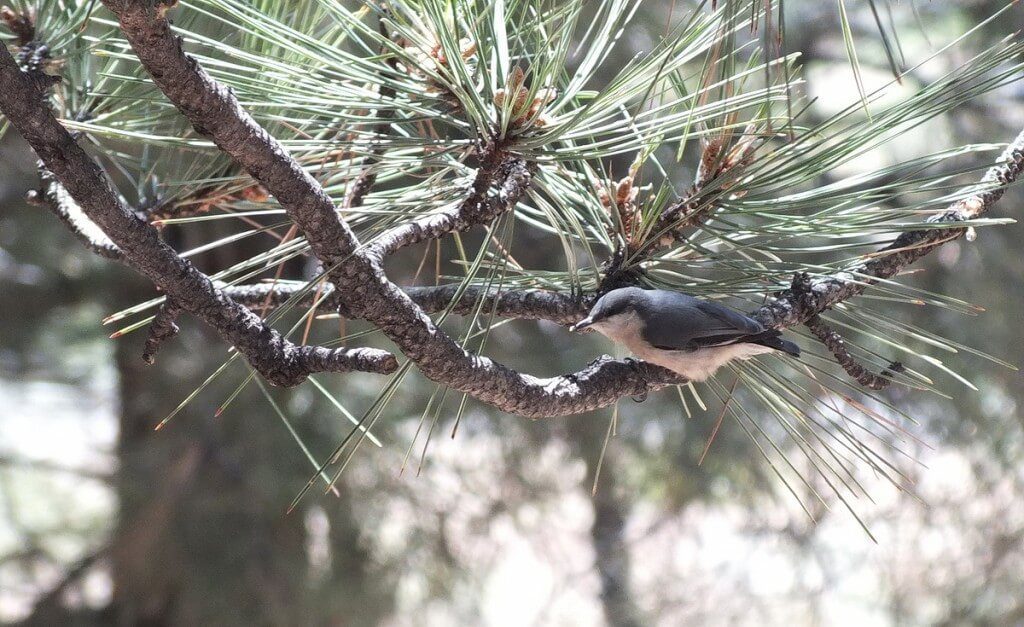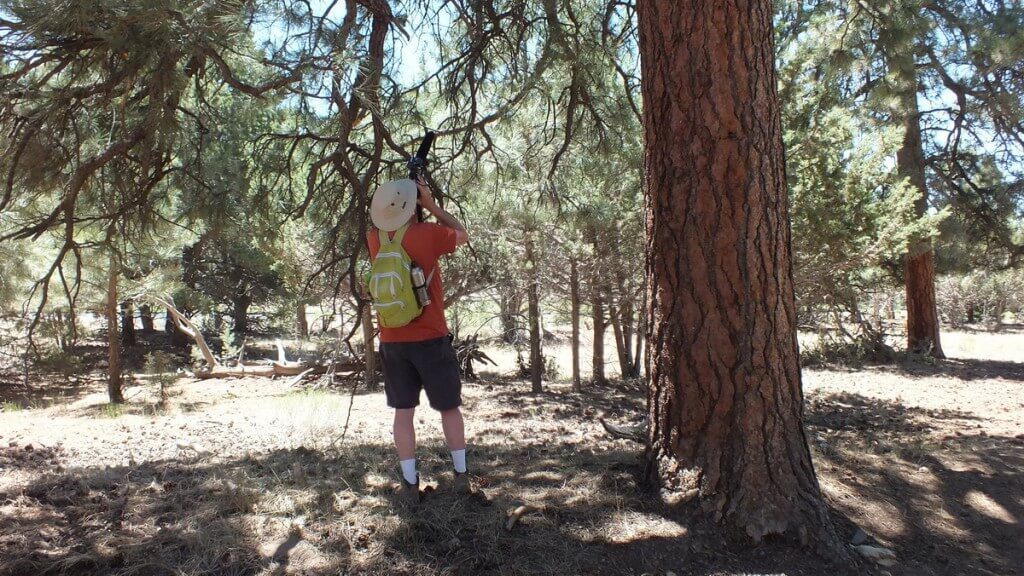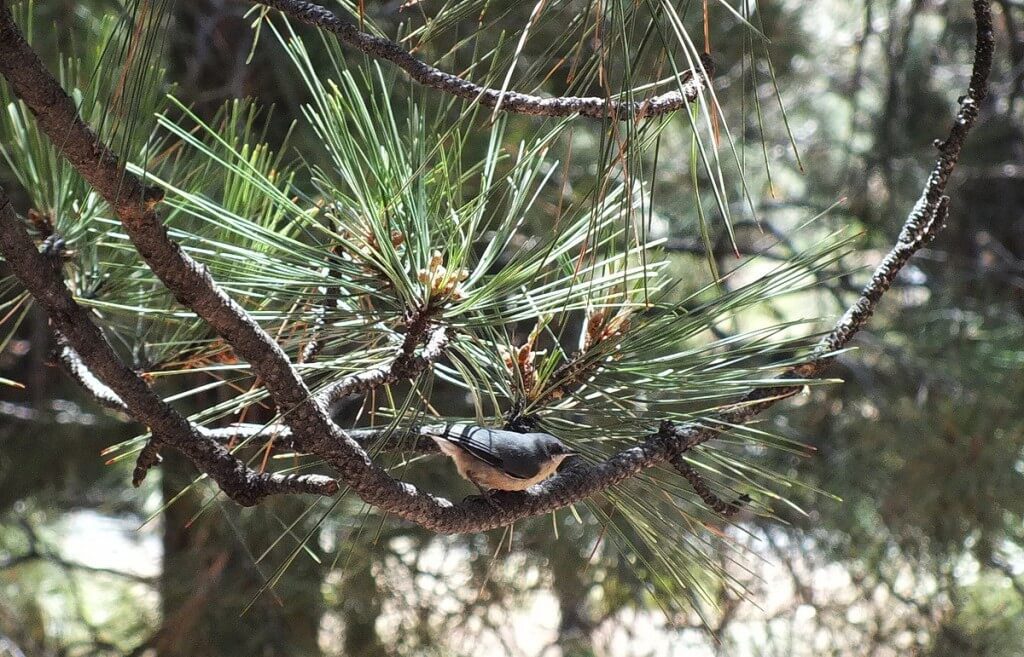Pygmy Nuthatches At Grand Canyon National Park
After completing a guided Fossil Walk along the South Rim Trail at Grand Canyon National Park, Bob and I hiked further along the rim to Maricopa Point before turning and heading back towards Maswik Lodge. Our detour proved worthwhile when we discovered a small flock of Pygmy Nuthatches inhabiting one of the many trees.
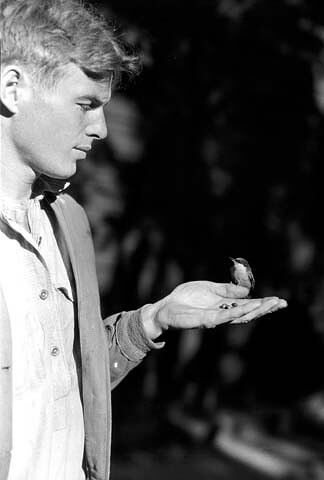
(Photo Courtesy: Grand Canyon National Park)
Sightings of Pygmy Nuthatches have been recorded at the Grand Canyon for decades. This picture of Ranger Naturalist Edwin McKee with a Pygmy Nuthatch sitting on his hand was taken in 1929 at Grand Canyon National Park. McKee is credited with creating many of the ranger talks and nature walks along the Rim, such as the Fossil Walk that we had just finished on the South Rim. His efforts helped to bring public awareness to the Grand Canyon, and because of Naturalists like McKee, we had the benefit of observing Pygmy Nuthatches on the same rim 84 years later.
Never ones to stick to the beaten path, we cut through the wooded area bordered by West Rim Drive, Rowe Well Road and the railway tracks. That stretch is host to numerous Ponderosa Pines, a different species of pine tree from those seen at home in Ontario. We are familiar with Jack Pine, Red Pine and Eastern White Pine, which are themselves magnificent, stately trees, but I was really impressed by the Ponderosa Pines.
Ponderosa Pines have been known to grow to a height of 268 feet, but what sets these trees apart from other pine species is the thick, cinnamon-red bark. On older trees, the bark separates into large, exfoliating plates that are said to give off a vanilla scent.
Bob and I were first attracted to the majestic pine trees for a closeup look at the bark, and that is when we took note of numerous Pygmy Nuthatches skittering along the lower branches of one tree in particular.
Not to be outmaneuvered by the Pygmy Nuthatches, a White-breasted Nuthatch was lurking nearby in the crotch of another tree.
The diminutive Pygmy Nuthatches are small even by nuthatch standards, but they are extremely energetic. They are typically found in long-needled pine forests and most often associated with ponderosa pines. We watched the nuthatches clamber acrobatically up and down the tree trunks, even out to the very tips of the branches, as they foraged for seeds and insects.
At such close range, we were able to distinguish the crisp brown cap on the large rounded head, the slate-grey back, whitish underparts and sharp, straight bill. The bill is indispensable when searching for ants, spiders, caterpillars, beetles and other such insects that make up the primary component of their diet during breeding season, as it was when we observed them. To uncover such tasty morsels, the nuthatches use the bill to pry up scales of bark, probe cracks, and glean from needle clusters and cones. Seeds make up the bulk of their winter diet.
Pygmy Nuthatches weigh a mere one-third of an ounce, and to maintain their hyperactive energy level, they consume a meager 9 calories of food per day. Because they breed in large, extended family groups, they are often seen foraging together in groups of 6 or more. Such a grouping of nuthatches is referred to as a “jar” of nuthatches.
The endearing bird sounds that these nuthatches create had us hooked…short, squeaky cheeps and peeps as they chattered amongst themselves in their highly social group. Bob and I spent a good 45 minutes watching the group of nuthatches and were quite thrilled to realize that they were a different species from those we see at home. Pygmy Nuthatches range from Southern British Columbia through random parts of the western United States and into central Mexico. It is common for them to be found at elevations up to 10,000 feet in some areas of the California mountains, and even higher in Mexico.
A unique energy saving habit that Pygmy Nuthatches have, adding to the social good, is the fact that these birds will also join forces in a nest cavity and roost together to ward off cold winter temperatures…as many as 100 birds in one tree cavity. They are one friendly bird.
Frame To Frame Bob and Jean

